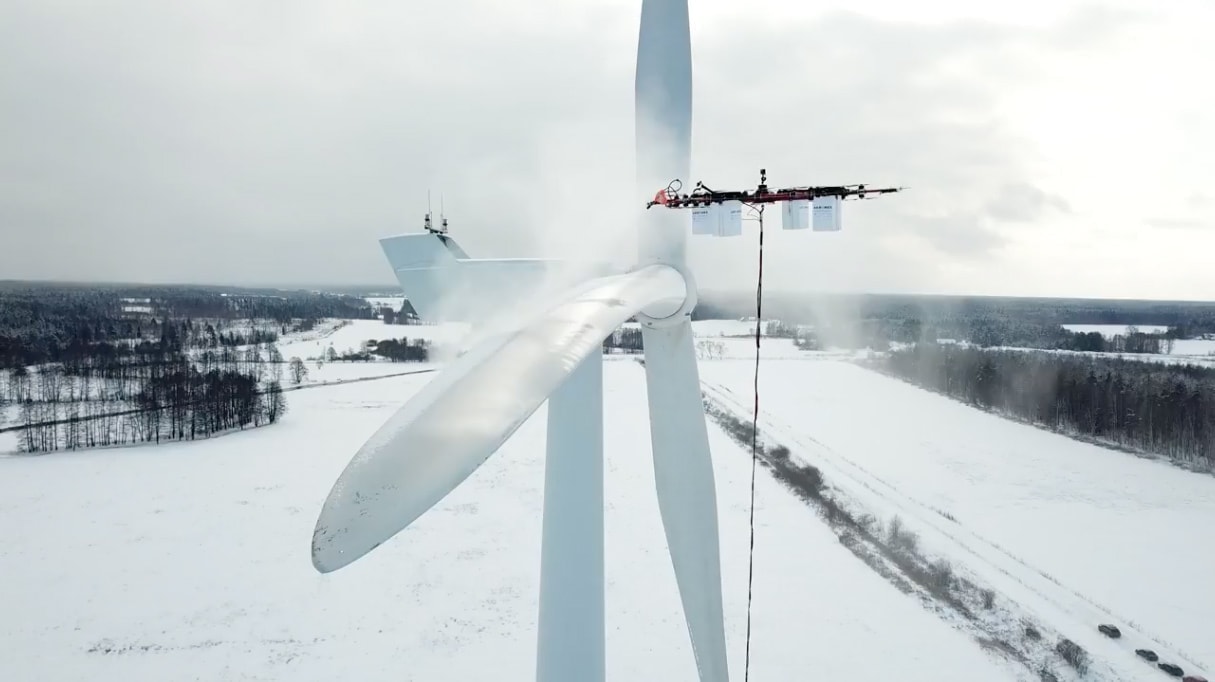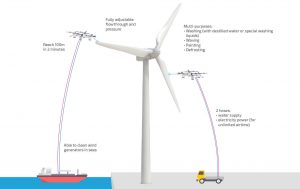
The potential of drones or unmanned aerial vehicles for infrastructure maintenance and conservation is huge. Although their commercial development has happened only recently, drones already provide evident advantages such as reduced times and cost in operations.
The fitting of high-resolution cameras and all sorts of sensors allows for visual inspections in complex structures or those situated at great heights; depending on the situation, they also make it easier to ‘see’ inside structures using infrared or thermal cameras. Commercial drones can also work both during the day and during the night, either piloted or autonomously, thus reducing inspection and maintenance intervals and minimising possible interferences in the operation of such infrastructures.
Lighter captive drones that do not require batteries
One of the main differences between commercial drones and recreational or hobby drones is their larger size and capacity to bear loads. Moreover, commercial drones are designed with a particular purpose in mind, which means that they are not limited by issues such as price, ease of use, speed and range. This means, for example, that commercial drones can do away with batteries and instead fly connected to an energy source on the ground through a cable (such drones are called ‘captive drones’). As a result, the aerial vehicle is lighter, it capacity to bear loads increases, and airtime becomes ‘unlimited’.

Image: Aerones www.aerones.com
Aerogenerator or wind turbine maintenance is one of the fields in which commercial drones are being used more extensively, even though wind is one of the main drawbacks for flying a drone. The company Aerones is specialised in the development of drones equipped with up to 36 rotors and with a capacity for lifting loads of up to 100 kilograms to a maximum height of 400 metres, even in conditions of light wind.
One of many applications of these large drones is cleaning and de-icing aerogenerator blades, both on land-based and offshore or marine windfarms. Although it may seem trivial, dirt (pollution, humidity, dust or insects) and snow or ice can significantly reduce aerogenerator efficiency – by as much as 20%, according to Aerones. Efficiency refers to the ability to transform wind power into electricity.
Dirtiness reduces aerodynamic strength
The clearest example of how snow and ice reduce the aerodynamic efficiency of aerogenerators is in aviation. Snow or ice on aircraft wings reduce lift, a phenomenon which has caused many serious accidents over the years.
This Latvian company also claims that regularly cleaning wind turbine blades using specific products such as wax or distilled water projected at a pressure of 200 bars can increase efficiency by between 3 and 7 per cent. This translates into thousands, if not tens of thousands, of Euros in additional electricity produced each year in the case of a 2 MW turbine installed in Spain. According to Aerones, depending on the size of the blades and the wind conditions, one of their drones can clean or de-ice up to ten wind turbines per day at a lower cost and lower risk for workers.





There are no comments yet